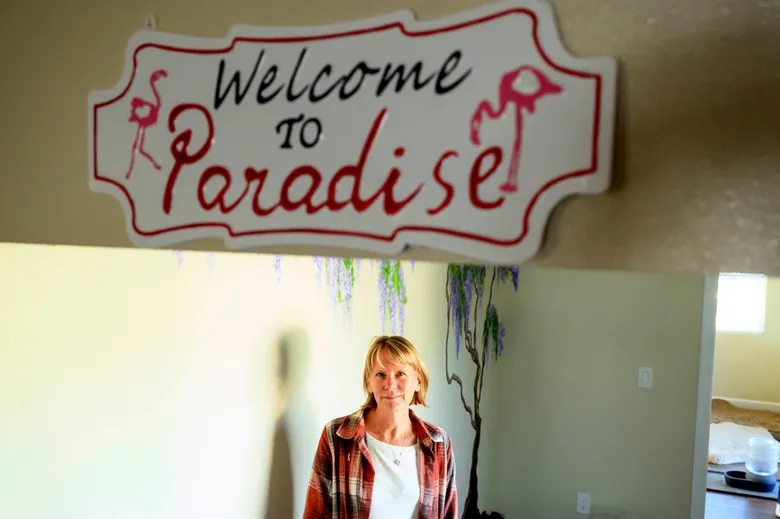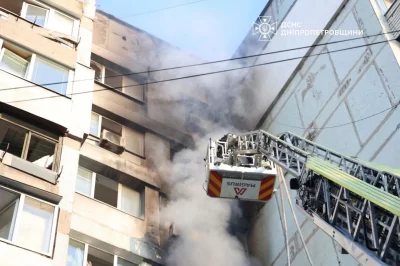
Heidi Lange was among the first to rebuild after the deadliest wildfire in California history destroyed her home in 2018 along with much of the town of Paradise.
After the fire, she got divorced, which left her with only half the money paid out by insurance — but she budgeted, planned ahead and even paid extra for stucco siding and a metal roof to make her new house more resistant to fire. She thought the hard part was over. So the office manager was stunned to learn nearly four years living in the same home, this month the annual premium on her home insurance would rise dramatically — from $1,200 to $9,750.
“To see we’ve come so far, only to have the legs kicked out from under us,” she said. “This is so crazy to me. How is this the biggest thing we’re dealing with?”
The soaring cost of home insurance has consumed the town of Paradise, residents and officials say, as it prepares to commemorate the five-year anniversary of the Nov. 8, 2018, Camp Fire. Residents have received annual premiums that near or exceed $10,000 — leaving many to wonder how they’re supposed to rebuild their hard-hit community when insurance is so shockingly high for houses in an area that is supposed to be among the most affordable in California.
The wildfire that ripped through Paradise and surrounding areas, killing 85, sounded an alarm to national home insurers about the costs of wildfires fueled by climate change. Seven of the 12 top home-insurers in California — including Farmers Insurance, State Farm, Allstate — have paused or restricted new business in California, saying they can’t afford to take on new clients.
Neither the state Insurance Department nor a major industry lobbying group could explain the sharp price increases five years after the fire, when so many steps have been taken to protect the community against future wildfires, including initiatives to bury power lines, and clear brush and trees away from buildings. The state did not have data on the average premium increase for the town.
Michael Soller, spokesperson for the Insurance Department, said premiums depend on a number of factors, including the cost of rebuilding, increased coverage or decreased deductibles as well as rate increases approved by the state. He said private insurers should be able to offer discounts for community fire-hardening efforts sometime early next year, but the risk of wildfire still exists in Paradise.
Farmers Insurance was cited by several residents as the company that raised their premiums, but residents also said they couldn’t find other insurers offering more affordable policies. Farmers declined an interview request.
“Homeowners insurance rates are determined using a number of different variables, including historical loss data, loss trends, age and construction-type of structures, etc. These and other factors, combined with inflation adjustments, are reflected in customer rates,” the company said in a statement.
Rex Frazier, president of the Personal Insurance Federation of California, said insurers lost more than two decades’ worth of profits from the wildfires of 2017 and 2018, and people may have to pay more to live in wildland areas.
Carl Johnsen, a retired drywall contractor, has lived in the same house since 1979, when he moved to Paradise. It survived the 2018 fire but his previous insurer dropped him, and he received a new quote of over $14,000 that he’s not inclined to pay, he said.
Johnsen doesn’t feel good about going without fire and liability coverage, but feels he has little choice.
“I guess I’d rather do that and have a place to live, unless it burns down,” he said of forgoing insurance. “I gotta have money to buy food … and pay taxes.”
Gene Robinson, 61, and his wife purchased a new home in Paradise with the insurance proceeds from the house that burned in the Camp Fire. This year, the insurance premium offered by Farmers on their four-bedroom, three-bath home soared from $2,800 to $9,550.
The couple opted for basic fire coverage through California’s insurer of last resort, which is quickly becoming the only option left for people in Paradise. The Robinsons are paying $4,500 through the California Fair Access to Insurance Requirements Plan, and $750 with another insurer for supplemental liability coverage.
“It’s a beautiful home, but it really makes you think about staying in the state,” said Robinson, a retiree.
The FAIR Plan is averaging 1,000 new applications a weekday from homeowners unable to find affordable home insurance in the private market. As of September, it had written more than 330,000 policies — up from nearly 273,000 plans last year and 127,000 in 2018.
Lara, the insurance commissioner, wants to allow insurance companies to consider climate change when setting their rates, but only if they write more policies for households that live in areas threatened by wildfire.
The state is also moving to allow insurers to make discounts available for homeowners who take certain measures, such as installing roofs that are fire-resistant rated and upgrading to multi-paned windows, said Soller, the department spokesperson.
He said home insurance premiums in California increased about 35% on average between 2017 and 2022, driven by historic wildfire losses, but are still lower than other large states with major climate risks, including Louisiana, Texas and Florida.
Kathy Ehrhart, a litigator in Chicago who focuses on the insurance industry, applauds California’s efforts to persuade insurance companies to stay in the state, because that should eventually promote competition and stability.
“Unfortunately for the homeowner today paying their bill,” she says, “that takes some time.”
Lange, a lifelong resident of the area, is frustrated that elected officials and insurance companies can’t figure out a fix. She may have to go through the state to insure her home, although that will still cost $7,300.
She considered leaving Paradise after the fire.
“But this is where my friends and my family and my church and my work — it’s where my village is,” she said, breaking down in tears. “And I just wasn’t going to let that be taken away.”







